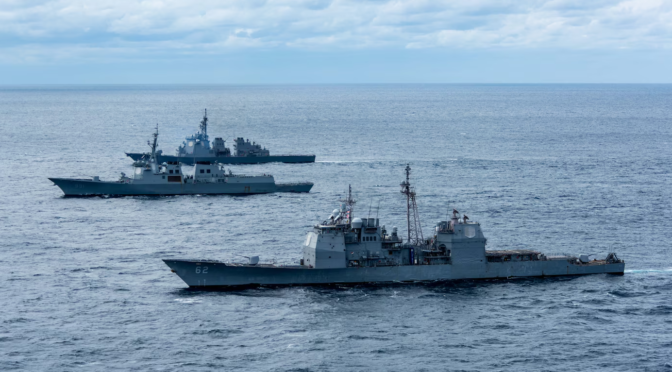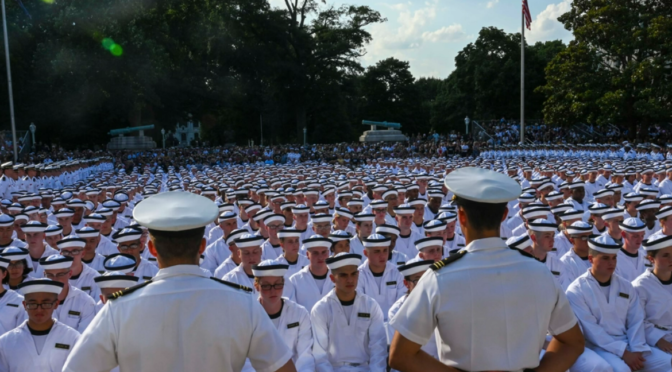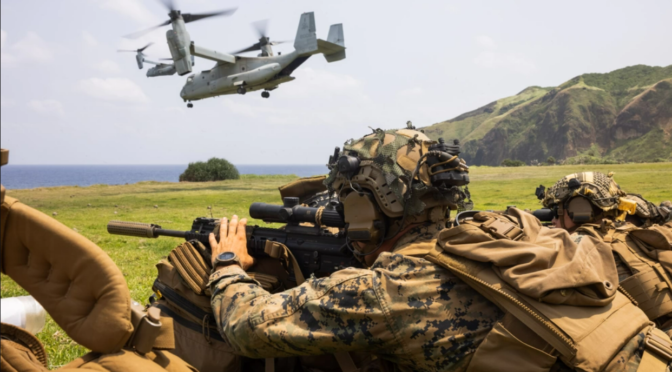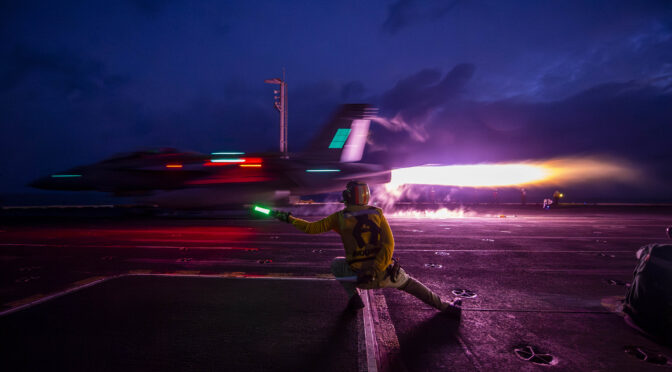Notes to the New Administration Week
By William Martin
The Yellow Sea is a vital maritime lane for trade and security in Northeast Asia. A 2012 CNA study found that “nearly 57 percent of China’s total trade volume and over 70 percent of South Korea’s total trade volume emanates from the Yellow Sea.”1 It is also home to the People’s Liberation Army (PLA) Northern Theater Command (NTC).
Despite the strategic significance of these waters, for too long the United States has ceded maneuver space in the Yellow Sea to the PLA Navy. In recent years, China has increased its aggressive activity in this vital maritime lane, to the detriment of U.S. interests, the security of allies, and the maintenance of a free and open Indo-Pacific. The United States and its allies must increase force presence along this key maritime terrain to disrupt PLA confidence in freely maneuvering through these waters as they conduct operations counter to U.S. interests.
China has begun installing physical structures in international waters that represent overlapping claims with South Korea, a major U.S. ally.2 This is reminiscent of actions in the South China Sea that allowed China to increase control of sea lanes there in violation of international law. Tensions between China and South Korea have been on the rise for years, including Chinese incursions across the 124th meridian, which has been a maritime control line between the two for decades.3 The PLA NTC routinely exercises with its carrier in the Yellow Sea, and has conducted joint exercises with Russia in the Sea of Japan, further raising tensions in the region.4
Although the U.S. Navy has conducted some recent exercises in the area, they have been restricted to the Korean coast and directed against the DPRK, without reference to PLA aggression.5 The U.S. Navy has long been absent from the broader areas where the PLA NTC is based, including international waters that are critical to U.S. allies and fundamental to regional stability.
Not only does the PLA NTC pose a significant and unaccounted-for threat in any contingency on the Korean Peninsula, those forces are also essential to the PLA’s Taiwan plans.6 The PLA NTC has already been seen performing vital missions during Taiwan scenario exercises, such as securing the Tsushima Strait.7 Moreover, the NTC controls one of the PLA’s two active carriers, several cruisers, scores of 5th generation fighter aircraft, and China’s most powerful destroyer variants.8 All of these assets could easily be sent to reinforce a Taiwan invasion, and the sea lanes they transit would remain largely uncontested. Increasing U.S. and allied presence in these international waters will strongly affect the PRC decision calculus regarding offensive operations against Taiwan.
It is critical for the United States to increase its naval presence in the Yellow Sea to disrupt the PLA’s belief in a near absolute freedom of maneuver through these critical waters. This requirement is not unlike ongoing actions to maintain allied freedom of action in the South China Sea and elsewhere.9 Such presence is fundamental to maintaining “peace through strength” in Northeast Asia.
William Martin is a pseudonym for a senior joint information planner and policy advisor for the Department of Defense. He holds a master of arts degree in history with a focus on East Asia.
The views presented here are those of the author and do not necessarily reflect the official positions of the United States Navy, the Department of Defense, or the U.S. government.
References
1. Michael A. McDevitt, Catherine K. Lea, Abraham M. Denmark, Ken E. Gause, Bonnie S. Glaser, Richard C. Bush III, and Daniel M. Hartnett, The Long Littoral Project: East China and Yellow Seas, A Maritime Perspective on Indo-Pacific Security (CNA, September 2012).
2. Lee Min-seok, Kim Dong-hyun, and Park Su-hyeon, “Exclusive: Beijing Resumes Disputed Installations in West Sea amid S. Korea’s Turmoil,” The Chosun Ilbo, January 10, 2025, https://www.chosun.com/english/national-en/2025/01/10/2VZWCDVB2JEOBKDIM5TOW5S634/.
3. Lee Chul-jae and Park Yong-han, “Beijing Ships Cross the Line Again,” Korea JoongAng Daily, January 26, 2021, https://koreajoongangdaily.joins.com/2021/01/26/national/defense/China-124th-meridian-Yellow-Sea/20210126183100580.html.
4. Choi Hyun-june and Gil Yun-hyung, “As Theater for Shows of Force, Korea’s East Sea Becomes a New Powder Keg,” The Hankyoreh, November 30, 2024, https://english.hani.co.kr/arti/english_edition/e_international/1101036.html.
5. David Choi, “US, South Korean, Canadian Warships Train in Yellow Sea Ahead of Incheon Anniversary,” Stars and Stripes, September 15, 2023, https://www.stripes.com/branches/navy/2023-09-15/trilateral-naval-drill-yellow-sea-incheon-11383145.html.
6. Ashton H.S. Cho and Yuan-Chou Jing, “Tipping the Balance? China’s PLA Northern Theater Command and the Korean Peninsula,” The Korean Journal of Defense Analysis 36, no.2 (2024), https://www.kci.go.kr/kciportal/ci/sereArticleSearch/ciSereArtiView.kci?sereArticleSearchBean.artiId=ART003084667
7. Ki-Yong Kim, “China’s Shandong Performs 5-Day Blitz Exercise Against Taiwan,” Donga Daily, September 18, 2023, https://www.donga.com/en/article/all/20230918/4434721/1.
8. Marielle Descalsota, “Take a Look at China’s Biggest Destroyer, a $920 Million Cruiser That’s Said to Be the 2nd Most Powerful in the World After the USS Zumwalt,” Yahoo News, June 21, 2022, https://www.yahoo.com/news/look-chinas-biggest-destroyer-920-063256052.html.
9. Lt. j. g. Rebecca Moore, “Netherlands, US Naval Forces Conduct South China Sea Operations,” US Navy’s Pacific Fleet News, accessed January 21, 2025, https://www.cpf.navy.mil/Newsroom/News/Article/3784611/netherlands-us-naval-forces-conduct-south-china-sea-operations/.
Featured Image: SEA OF JAPAN (Oct 6, 2022) The Ticonderoga-class guided-missile cruiser USS Chancellorsville (CG 62), front, the Republic of Korea navy destroyer ROKS Sejong the Great (DDG 991) and the Japan Maritime Self-Defense Force destroyer JS Chokai (DDG 176) transit the Sea of Japan during a trilateral ballistic missile defense exercise. (U.S. Navy photo by Mass Communication Specialist 3rd Class Gray Gibson)





